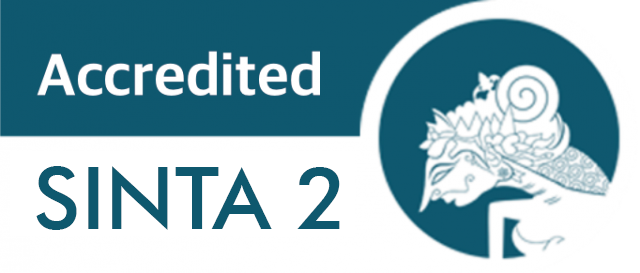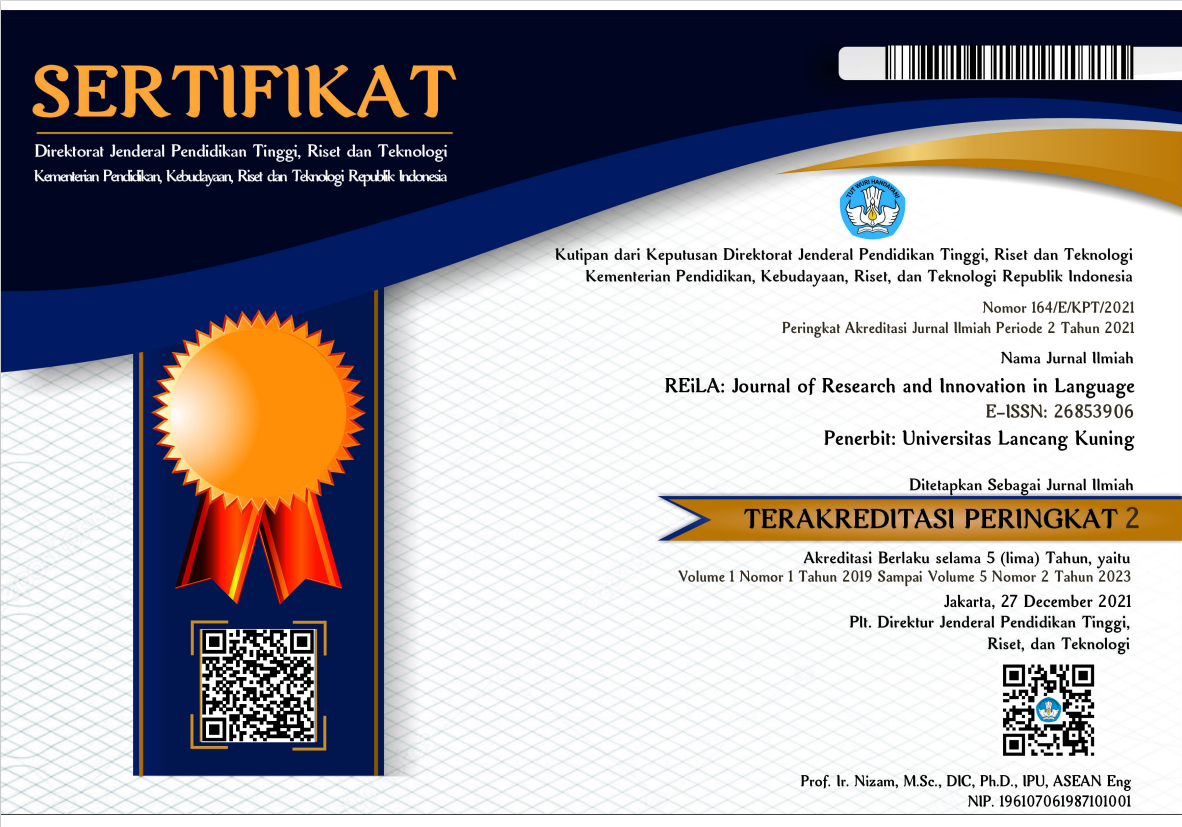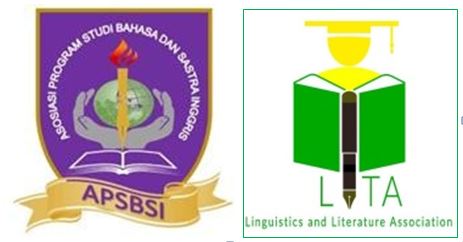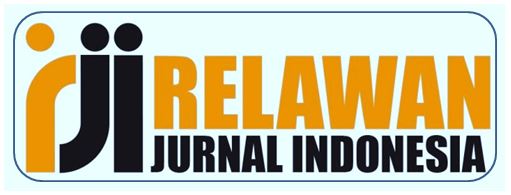Bilingual Education vs English-only Approach at Australia’s Northern Territory Schools
Abstract
The present library research highlights the “English-only” approach used in the Aboriginal classrooms in Northern Territory (NT) schools, Australia. This library study collects its data from five decades (1968-2018) of research and theorisation on the implementation of English instruction at Indigenous classrooms in Australia by referring to the changes of approaches from bilingual instruction policy to the current “English-only” approach. The writer then reports the problems occurred in the implementation of this approach in the specific classroom interaction. Factors like socio-cultural gap and dysfunctional discourse were found to be influencing the ineffective English-only classroom in the NT schools. What alternatives may have been tried in the Northern territory schools and to what degree of success?
Downloads
References
Anderson, G., & Harrison, K. (2007). Global language hotspots. Retrieved June 2, 2018 from http://www.swarthmore.edu/SocSci/langhotspots/index.html.
Angelo, D. (2013). Identification and assessment contexts of Aboriginal and Torres Strait Islander learners of Standard Australian English: Challenges for the language testing community. Papers in Language Testing and Assessment, 2(2), 67-102.
Angelo, D., & Carter, N. (2015). Schooling within shifting landscapes: Educational responses in complex Indigenous language contact ecologies. Multilingualism and Language in Education: Current Sociolinguistic and Pedagogical Perspectives from Commonwealth Countries. Cambridge: CUP.
August, D. E., & Shanahan, T. E. (2006). Developing literacy in second-language learners: Report of the National Literacy Panel on Language-Minority Children and Youth. Lawrence Erlbaum Associates Publishers.
Australian Human Rights Commission. (2010). The Community Guide to the UN Declaration on the Rights of Indigenous People. Retrieved from https://declaration.humanrights.gov.au/sites/default/files/document/publication/decl aration_com munity_guide.pdf
Baker, C. (2000). A parents’ teachers’ guide to bilingualism (Second Edition). Clevendon, England: Multilingual Matters.
Baker, C. (2011). Foundations of bilingual education and bilingualism (Vol.79). Clevedon: Multilingual Matters.
Biddle, N. (2014). Spreadsheet: Number of Indigenous language speakers, 2006–2011. Retrieved May 30, 2018, from http://caepr.anu.edu.au/Indigenous-language- usage.php.
Canagarajah, A.S. (2006). The place of World Englishes in composition: Pluralisation continued. College Composition and Communication, 57, 586–619.
Carter, R. (2003). Language awareness. ELT Journal, 57(1), 64–65.
Chavez, L. & Amselle, J. (1997). Billingual Education Theory and Practice: Its Effectiveness and Parental Opinions. NASSP Bulletin, 81(586), pp.101-106. Commonwealth of Australia. (1973). Parliamentary debates. Retrieved June 1, 2018 from http://goo.gl/9aCMdd.
Crago, M. (1988). Cultural context in communicative interaction of Inuit children. PhD dissertation, McGill University.
Creese, A., & Blackledge, A. (2010). Translanguaging in the bilingual classroom: Pedagogy for learning and teaching? Modern Language Journal, 94(1), 103–115.
Cummins, J. (1984). Billigualism and Special Education: Issues in assessment and pedagogy. San Diego, CA: College-Hill Press.
Cummins, J. (2000). Language, power and pedagogy. Bilingual children in the crossfire. Clevedon, England: Multilingual Matters.
Devlin, B. (2009). Bilingual education in the Northern Territory and the continuing debate over its effectiveness and value. Paper presented at the AIATSIS Research Symposium, Bilingual Education in the Northern Territory: Principles, policy and practice, Canberra, June 26.
Devlin, B. (2010). Evidence, policy and the ‘Step’ model of bilingual education in the NT: A brief outline. Paper based on a presentation given at a Public Forum in Darwin on September 9, 2010. Retrieved from http:// www.ns.uca.org.au/wp- content/uploads/2010/09/Evidence-in- Bilingual-Education.pdf
Devlin, B., Disbray, S. and Friedman Devlin, N. (2017). History of bilingual education in the Northern Territory. Singapore: Springer.
Ganal, N. (2014). Demographic Profile and Perception of Teachers and School Heads on Mother Tongue as Language of Instruction. Indian Journal of Management Science, 4(3), 44.
Garcia, O., & Wei, L. (2014). Translanguaging: Language, bilingualism and education. New York, NY: Palgrave Macmillan.
Godinho, S., Woolley, M., Scholes, M., & Sutton, G. (2017). Literacies for remote schools: Looking beyond a one size fits all approach. Literacy Learning: The Middle Years, 25(1), 28.
Henrard, K. (2007). Language Rights in South Africa: An adequate level of minority protection?’ In Matthias Koenig and Paul de Guchteneire (eds). Democracy and human rights in multicultural societies. Aldershot: UNESCO/Ashgate. pp.185-216.
Kinslow-Harris, J. (1968). Linguistics and Aboriginal education: A practical use of linguistic research in Aboriginal education in the Northern Territory. Australian Territories, 8(1), 24–34. http://www.als.asn.au/proceedings/als2007/liddicoat.pdf
Krashen, S., D. (1996). Under attack: the case against bilingual education. Culver City, Calif: Language Education Associates.
Krause, L.S & Prinsloo, M. (2016) Translanguaging in a township primary school: Policy and Practice. Southern African Linguistics and Applied Language Studies, 34:4, 347- 357, DOI: 10.2989/16073614.2016.1261039
Lessard, S., Caine, V., & Clandinin, D.J. (2015). A narrative inquiry into familial and school curriculum making: attending to multiple worlds of Aboriginal youth and families, Journal of Youth Studies, 18(2), 197-214, DOI: 10.1080/13676261.2014.944121
Lessow-Hurley, J. (2000). The Foundations of Dual Language Instruction. Addison Wesley Longman, Inc.
Liddicoat, A., J. (2008). Models of national government language-in-education policy for indigenous minority language groups’. In Timothy J. Curnow (ed.) Selected papers from the 2007 Conference of the Australian Linguistic Society. Adelaide.
Lowell, A. & Devlin, B. (1998). Miscommunication between Aboriginal Students and their Non- Aboriginal Teachers in a Bilingual School. Language, Culture and Curriculum, 11(3), 367-389, DOI: 10.1080/07908319808666563
Manning, M, L. & Baruth, L, G. (2004). Multicultural education of children and adolescents. Pearson Education, Inc.
Marmion, D., Obata, K., & Troy, J. (2014). Community, identity, wellbeing: The report of the Second National Indigenous Languages Survey. Canberra: Australian Institute of Aboriginal and Torres Strait Islander Studies.
Martin, I. (2018). Reconceptualising English education in a multilingual society: English in the Philippines. Singapore: Springer.
Martin-Beltrán, M., Guzman, N., & Chen, P. (2017). ‘Let's think about it together:’ how teachers differentiate discourse to mediate collaboration among linguistically diverse students. Language Awareness, 26(1), 41-58. DOI: 10.1080/09658416.2016.1278221
Meakins, F. (2014). Language contact varieties. In H. Koch & R. Nordlinger (Eds.), e languages and linguistics of Australia: A comprehensive guide, 365–416. Boston: De Gruyter Mouton.
Moses, K. R., & Wigglesworth, G. (2008). The silence of the frogs: Dysfunctional discourse in the ‘English-only’ Aboriginal classroom. In J. Simpson & G. Wigglesworth (Eds.), Children’s language and multilingualism. London: Continuum.
Mufwene, S. S., & Vigouroux, C. B. (2012). Individuals, populations, and timespace: Perspectives on the ecology of language. Cahiers de Linguistique, 38(2), 111–138. Special issue, Sociolinguistique comme construction, Françoise Gadet (Ed.).
NILS. (2005). National Indigenous Languages Survey Report 2005. Canberra.
Silburn, S. R., Nutton, G., McKenzie, J. W., & Landrigan, M. (2011). Early years English language acquisition and instructional approaches for Aboriginal students with home languages other than English: A systematic review of the Australian and international literature. Darwin: Menzies School of Health Research.
Simpson, J., Caffery, J., & McConvell, P. (2009). Gaps in Australia’s Indigenous language policy: Dismantling bilingual education in the Northern Territory. AIATSIS Discussion Paper, 24.
Skutnabb- Kangas, T. (2000). Language, power, and pedagogy: Bilingual children in the crossfire. Clevedon, England: Multilingual Matters
Spillman, D. (2017). A Share in the Future . . . Only for Those Who Become Like ‘Us’: Challenging the ‘Standardisation’ Reform Approach to Indigenous Education in the Northern Territory. Australian Journal of Indigenous Education, 46(2), 137- 147. DOI:10.1017/jie.2017.3
Van Gelderen, B (2017). Growing Our Own: A ‘two way’ place based approach to Indigenous initial teacher education in remote Northern Territory. Australian and International Journal of Rural Education, 27(1), pp. 14-28.
Waller, L. (2011). Learning in both worlds. Inside Story: Current affairs and culture from Australia and beyond. (Essays and reportage). Retrieved from http://insidestory.org.au/learning-in-both- worlds
Wang, P., C. (1986). A bilingual education lesson from China. Thrust, 16(1), 38-39.
Wei, L. (2011). Moment analysis and translanguaging space: Discursive construction of identities by multilingual Chinese youth in Britain. Journal of Pragmatics, 43, 1222–1235. DOI: 10.1016/j.pragma.2010.07.035
Wigglesworth, G., Simpson, J., & Vaughan, J. (2018). Language practices of Indigenous children and youth. London: Palgrave Macmillan UK
Wilson, B. (2014). A share in the future: Review of Indigenous education in the Northern Territory. Darwin: NT Department of Education.
Wilson, B., Quinn, S., Abbott, T., & Cairney, S. (2017). The role of Aboriginal literacy in improving English literacy in remote Aboriginal communities: an empirical systems analysis with the Interplay Wellbeing Framework. Educational Research for Policy and Practice, 17(1), 1-13. DOI: 10.1007/s10671-017-9217-z










